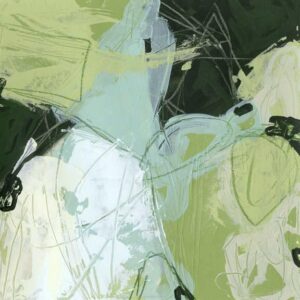Wayfinding, the process or activity of orienting oneself and planning and following a path to a destination, is a critical concern in complex environments such as healthcare facilities. Navigation of healthcare environments not only impacts patients and visitors but also staff, with consequences that can be life or death in instances where people may be unable to successfully negotiate the environment in emergency situations. The information systems that comprise wayfinding help people navigate through a physical environment and enhance their understanding of a space. Wayfinding impacts users’ experiences of a space, supporting them, and alleviating discomfort in an unfamiliar environment. Short, Reay & Gilderdale observe that “[o]ne of the reasons wayfinding has continued to attract the attention of decision-makers is that wayfinding problems have a potential negative influence on human physiological and psychological states. For instance, evidence suggests that not being able to find a destination is associated with higher blood pressure, increased physical aggression, and fatigue in patients (Carpman & Grant, 2002). Wayfinding problems possibly pose greater difficulties for aging populations with lower vision, cognitive disorders, limited physical mobility, and other challenges (e.g., Lee & Kline, 2011; Rousek & Hallbeck, 2011)” (2017, p. 2). Shoddy wayfinding can negatively impact a user’s perception of their experience and thus the organization.
Art is one of the mediums that can be used to support the wayfinding journey through a facility. As an environmental element, art contributes to a broader understanding of the spatial environment as well as to placemaking. The display of art is a way to contribute to the identity of a location that makes it distinguishable and supports the creation of distinct visual attributes for specific areas or zones. In a study of interior elements in healthcare environments that contribute to wayfinding, Pati et al. (2015) found that for users, the artwork was a familiarity marker or landmark in the environment. Of the design elements incorporated in the space by interior designers, such as color, display boards, and information panels, the artwork was the most frequent information source for orientation, ranking “immediately after the broad category of primary navigational information…following landmarks was rated immediately after ‘‘following signs and directions’’ as the information source that afforded the highest degree of help to the subjects” (2015, pp. 62-63).
The importance of landmarks as aspects of the visual quality and imageability of architectural space is also touched upon by Lacanna et al (2019). Landmarks are “architectonical/artistic elements that, with their level of aesthetic relevance and dimensional scale, play a decisive role in creating the identity of the place where they are located” (2019, p. 20). Most often works of art, the study identifies four types of landmarks: dominant, positive, neutral, and negative. Dominant landmarks, typically executed on an oversized scale with stimulating aesthetic impact, give character to the place where they are located and play a key role in place identification and user perception by enhancing space readability, wayfinding, and contributing to positive and memorable experiences. More modest in scale but still with high aesthetic value, positive landmarks serve the same purpose as dominant landmarks. Neutral landmarks are those that do not make a strong impact in the area in which they are located, with little contribution to the identification of the surrounding area; and negative landmarks are those almost insignificant to user experience and readability of the space due to their location or lack of aesthetic impact. Pati et al. (2015) describe landmarks/familiarity markers as constituting contextual information that people actively use as they navigate the same path more than once as they build a rich mental route within a more skeletal conception of a larger space.
The use of art as a wayfinding medium in healthcare environments reveals the complex intersections of the experience of place, branding, and the promotion of healing. Short, Reay & Gilderdale point out that “placemaking provides a strong sense of understanding place, and ties branding and identity into the environment to create a solid sense of orientation ( 2017, p. S2553). In a healthcare setting, art contributes to the character of a place and a means to enhance the overall experience of users, taking into consideration research-informed approaches to artwork selection that demonstrate the appropriateness of some types of art over others depending on location. As such, artwork installations can extend beyond framed prints to incorporate environmental graphics, sculpture, painting, multimedia, and new media art that contributes to an artistic theme that helps to express and define a space. Incorporating a diversity of artwork into wayfinding merges function and creativity in a way that can speak to a location’s distinctness; and works of art can serve as associative objects that remind people of their experiences within a space and any attendant emotions.
While artwork is ambiguous and open to personal interpretation, its use in wayfinding not only highlights a specific way or place, it also communicates an organization’s ethos. The collection below is developed around a forest motif with adult users in mind. Such a motif can serve as a visual branding element throughout campus, with specific themes drawn out the larger motif to give identity to different locations or zones. Just as the location of artwork can serve as landmarks/familiarity markers, the placement and context of art communicate different things about individual works, as does the interaction of a group of works in a particular space. The meaning of and response to objects, images, and the buildings in which they are presented can be affected by different types of displays. This is helpful to keep in mind when thinking about artwork not only as a medium for wayfinding but also as a form of communication in itself. An awareness of the multidimensional communicative potentials of artwork and its display in a space can enhance wayfinding in such a way that it elevates the experience of a place.




